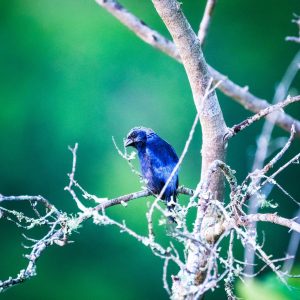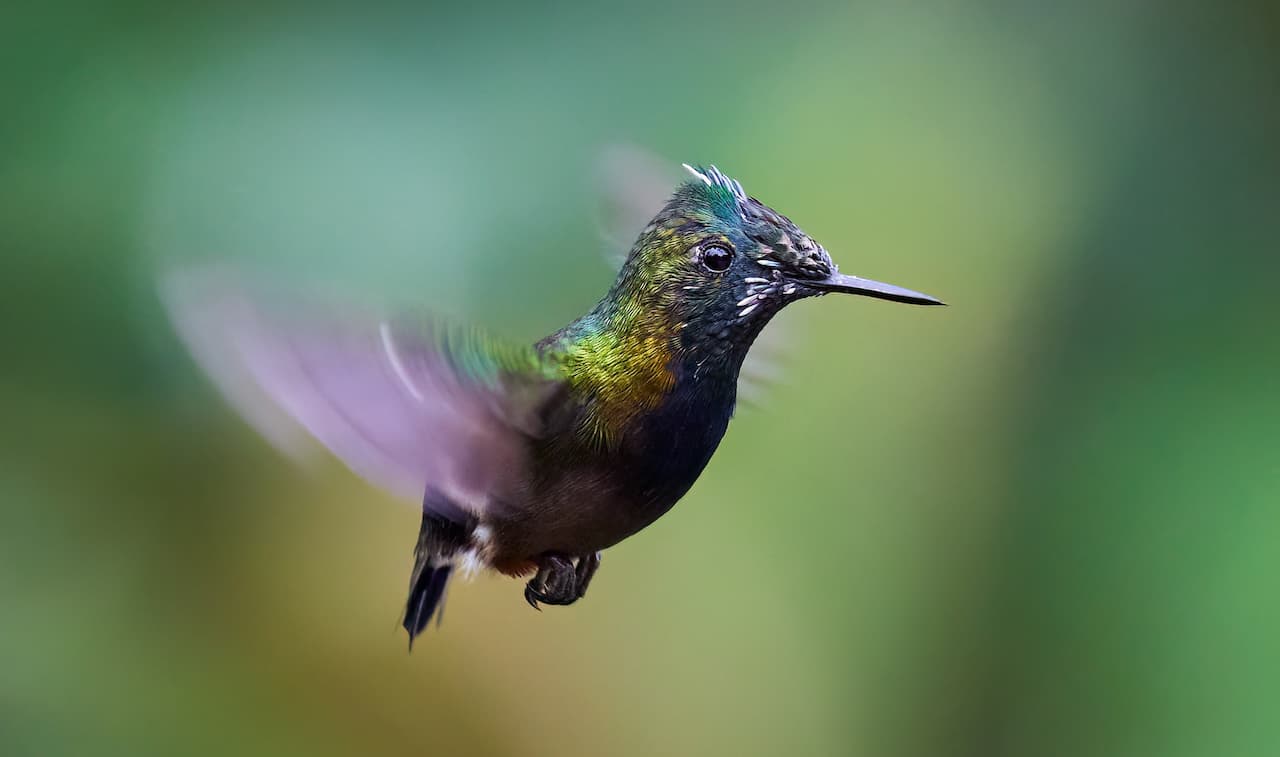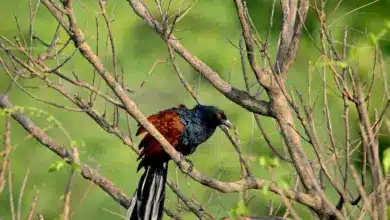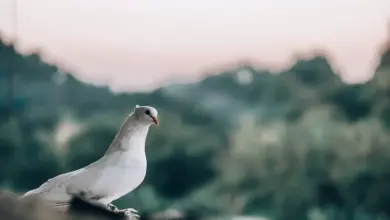Unicolored Jays
Unicolored Jays (Aphelocoma unicolor)
Overview … Alternate (Global) Names … Subspecies, Ranges and ID … Description … Calls / Vocalizations … Diet / Feeding
The Unicolored Jays (Aphelocoma unicolor) are dark-blue jays found in the wet cloud forests of Central America and Mexico.
Their range stretches from the Mexican states of San Luis Potosí (north-central Mexico) south to Veracruz (Eastern Mexico) and Guerrero (Southwestern Mexico) to west-central Honduras and El Salvador.
They are most common at elevations from about 7,000 – 10,000 feet (~2,100 and 3,050 meters).
These birds typically remain high in the canopy and only rarely come down to feed on the ground.
Subspecies and Ranges:
- Unicolored Jays (Aphelocoma unicolor unicolor – Du Bus, 1847)- Nominate form
- Range: Mountains of southeastern Mexico, around San Cristóbal and east along Sierra Madre to Pico de Loro, in Chiapas – and Guatemala, east in Sierra de las Minas to Chilasco
- Unicolored Jays (concolor) (Aphelocoma unicolor concolor – Cassin, 1848)
- Range: Mountains of southeastern Mexico – in eastern Hidalgo, west central Veracruz, eastern México, Puebla
- Unicolored Jays (guerrerensis) (Aphelocoma unicolor guerrerensis – Nelson, 1903)
- Mountains of southwestern Mexico, near Omilteme, in south central Guerrero
- Unicolored Jays (oaxacae) (Aphelocoma unicolor oaxacae) Pitelka, 1946
- Range: Central highlands of Oaxaca in southern Mexico.
- Unicolored Jay (griscomi) (Aphelocoma unicolor griscomi – van Rossem, 1928)
- Range: Mountains of northern El Salvador and western Honduras – from Los Esesmiles and Mt Pucca E to Alto Contoral and Rancho Quemado
Description
- Plumage is a uniform dark blue, except for a small area of black around the eyes.
- Crestless
- Long-tailed
- Heavy bill
Diet / Feeding
Diet consists of various nuts, seeds, fruits, berries, lichens, flowering plants (such as bromeliads), and animal food (insects, small rodents, lizards, etc.)
Calls / Vocalizations / Sounds
Alternate (Global) Names
Chinese: ???? … Czech: Sojka jednobarvá … Danish: Indigokratskade … Dutch: Leiblauwe Gaai … Estonian: maia sininäär … Finnish: Sinipensasnärhi … French: Geai unicolore … German: Einfarbhäher … Hungarian: egyszín? szajkó … Italian: Ghiandaia unicolore … Japanese: mujiaokakesu … Norwegian: Indigoskrike … Polish: modrowronka jednobarwna … Russian: ??????????? ????????????? ????? … Slovak: kapuciarka jednofarebná … Spanish: Chara / grajo unicolor, Urraca Pinera, Urraca unicolor … Swedish: Indigoskrika
Relevant Web Resources:
Please Note: The articles or images on this page are the sole property of the authors or photographers. Please contact them directly with respect to any copyright or licensing questions. Thank you.





